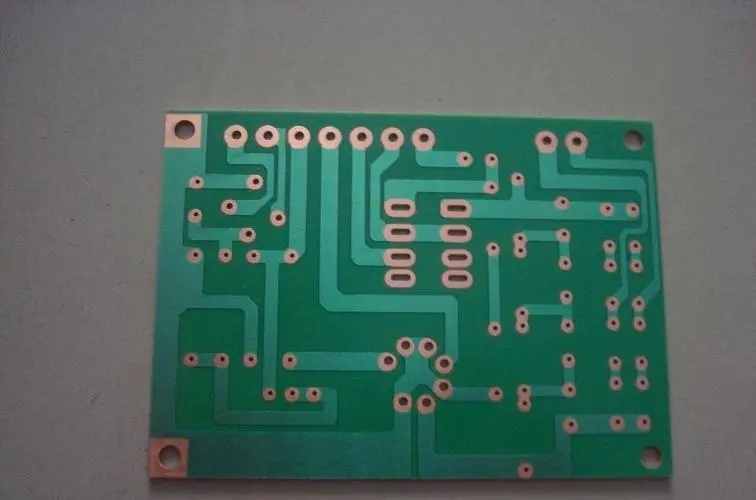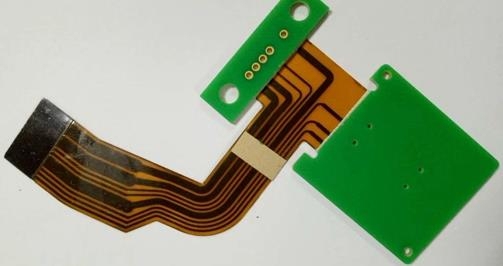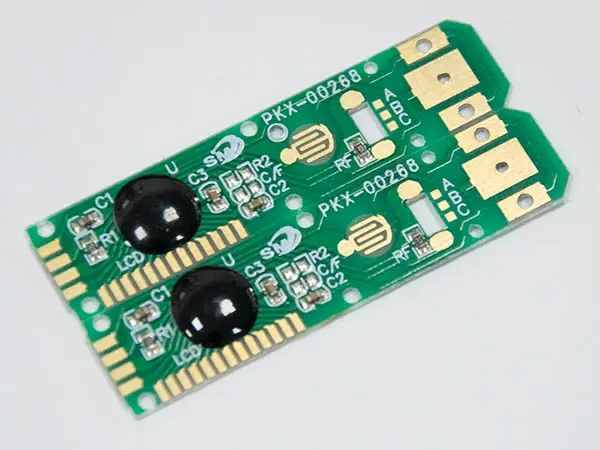
11 Skills in Designing and Manufacturing Micro PCB
The electronic world is about to explode, or I should say "implosion", which is defined as "violent inward collapse". This implosion will be driven by the greatly reduced size of electronic products or the great improvement of electronic product functions, which will lead to the miniaturization of printed circuit boards. Here are some tips to help you understand how to handle the design and manufacturing of micro PCBs.
Today, the size reduction of the basic circuit board will enable designers to reduce the size of their PCB by half, or to a quarter of the original size. The reason why we say "today" is because when I wrote this article, I knew that several companies began to set foot in the field of microelectronic printed circuits. Very thin wires that could not be used by designers in the past will now become mainstream, while the original absolute minimum line width of 75 microns (3 mils) will gradually decrease to 30 microns (1.2 mils) or less.
For smaller routing and vias, new design rules are required because the manufacturing methods of printed circuit boards are completely different and advanced. Microelectronics printed circuit manufacturers cannot reliably manufacture wires below 75 microns using standard old dry films, plates, and etching processes. Lithography is a choice method to produce these very thin lines and spaces. Turning to a smaller line width may surprise a considerable number of "stuck in mud" older printed circuit manufacturers, who do not even provide a 3 mil resistor. In order to be competitive in the near future, PCB workshops will need to provide at least 50 microns of lines and space, even as low as 30 microns.
With the expansion of microelectronics business and more and more printed circuit companies finding the technology necessary to manufacture very thin lines of 40 microns and below, designers will need to be familiar with new design rules and the advantages and disadvantages of microcircuit manufacturing.
How to Design Micro PCB
For obvious reasons, the very thin 30 micro meter wire cannot use the ordinary 1 ounce copper. When we reduce the line width, we must reduce the thickness. At Sierra Circuits, we used 18 micron thick copper to make a 25 micron production line, but this is about the upper limit. Unless your design uses a higher current, a thinner copper wire should not be a problem, in which case a specific wire can be made wider to handle a higher current. The 30 micron production line is solid and reliable, but it will not suffer too much physical abuse, which can be almost eliminated by using typical solder mask.
Thin wires may cause concern to many designers, but they need to realize the 200 micron wide stitch that is currently used and reduce it to 25 to 13 micron aluminum or gold round wires connecting the chip to the chip carrier. Thin wires are encapsulated in multiple layers of inner layers or by solder resist, which means they are actually locked. New methods have been developed to attach copper to the surface of the circuit board. These new methods are used to improve the overall adhesion of micro traces to the surface. We have an example board with a 40 micron trace, without a solder mask, and we allow customers to scratch with their nails. So far, no one has left any traces.
The first few micro designs have large fillets from 30 micron traces to pads. As time went by, it proved unnecessary. The wiring directly to the pad is very reliable. Additional fillets have just proved to increase image writing time and cost.
Small through-hole: There are physical limitations on the size of the micro through-hole. Below 50 microns (2 mils), the plating solution will not properly plate the hole wall, resulting in poor through-hole quality. Our lasers can drill holes as small as 20 microns, but we cannot electroplate them. The thickness of the laminate controls the minimum diameter of the through-hole, and the upper limit is 2:1 for the plated through-hole.
For example, for electroplating, a 3 mil micro through-hole is limited to a 6 mil thick laminate. There is also a limit to the depth that our Yag laser can drill through holes. As the diameter decreases, the ability to penetrate the laminate to form a clean hole decreases. A 3 mil through-hole is limited to a depth of 4 to 5 mils in FR4 and 6 to 7 mils in unglazed laminates used in HDI applications. Everything about micropores is not necessarily bad. Micropores may not be as small as traces, but we can add sweetener to the pot because the ring around the micro pores will become significantly smaller.
When we produced the first micro PCB, the first thing we noticed was that the through-hole was centered in the pad. This design uses a 9 mil pad and a 3 mil through-hole, which is tight for traditional printed circuit engineering. The new, more accurate laser manufacturing method will allow pads as small as 5 mils and through holes as small as 3 mils, thus saving a lot of circuit board area.

Using new microcircuit design techniques instead of conventional printed circuit techniques can save a lot of space. Today, the optimal spacing for typical 75 micron wire width is about. 5mm, and 75 microns (3 mils) can be obtained through 75 micron wire and 250 micron (10 mils) pad. The spacing between gaskets is 225 microns (9 mils), and only one 75 micron line is allowed between gaskets. This minimum specification is difficult for most stores.
Design Criteria for Micro PCB
The microcircuit technology of 3 mil via, 5 mil, 30 μ m wire and 30 μ m spacing can produce a spacing layout of 0.2 mm.
Compared with the standard 3 mil PCB layout, microcircuit technology can reduce the area used by five times. In a future article, we will discuss the idea of reducing the required component area. However, even if the same components are used, switching only to 30 microwires and smaller pads will significantly reduce the board area.
When routing, use the same technique, but try to tilt the line when turning instead of using a 90 degree turn. The diagonal line at the corner distributes the corner stress in a larger area.
1. Microvias
When using an HDI technology layer added to the top of a multilayer board or as a multilayer of all HDIs, the micro through-hole can be used to connect between the thin layers. A 5.9 mil diameter through hole with a maximum thickness of 60 mils can be drilled, or a 2-3 mil diameter laser hole can be drilled, but only on a 2-4 mil thick HDI laminate. Keep in mind that compared with the holes created by the laser, the drilling drift is large, which limits the pad to hole size. For drilling, use a 12 mil pad and a 6 mil hole. For laser drilled holes, use a 5 mil pad with a 3 mil through hole.
2. Hole size
Although it seems obvious, it is worth reiterating that every element of the traditional PCB design needs to be adjusted to fit the smaller micro size. This can be a challenge for PCB layout engineers who are familiar with traditional PCB design. The most common error we see in this area is an oversized hole. In fact, the micro PCB design should have laser micro through-hole to interconnect between the substrate layers. If the holes in the design are too large (usually), the micro PCB will not work well or even work properly.
This again returns to the importance of working with the right micro PCB manufacturer. When PCB companies are partners, you will have an expert who can ask for help in every step of the PCB process to ensure that your micro PCB design meets all the necessary requirements.
3. Copper thickness
A normal 3 mil thin wire circuit is 1 ounce copper, using oz for every 30 micron width of the microcircuit. Conventional pattern electroplating is used to manufacture microcircuits, which means that traces do not have to be led from the circuit to the electroplating bus, pattern electroplating is connected to the entire circuit, and lead wire bonding electroplating is chemical or electrical.
4. Reliability
Most common printed circuit boards can be used for HDI or microcircuit, but they have limitations. Micro single-sided and double-sided circuits can be made of rigid FR4 laminates, but they need to be very thin to allow for micro through-hole.
5. Electrical test
At present, the lower limit of flight probe or even rigid probe (nail bed) technology is 2-3 mils. We expect it to decrease over time because smaller platforms are needed when necessary. If your microcircuit has smaller points, such as edge strip connectors, it is wise to extend the line from the circuit to 3-4 mil pads.
6. Welding resistance film
Unfortunately, the imaging technology that allows us to manufacture 30 microwires has not been transferred to the solder mask. The 75 micron position accuracy and image resolution are still the limit.
7. Identification mark
Typical screen printing image accuracy is too large for microcircuits. Sierra Proto uses a very fine inkjet printer, which results in a very small identification mark resolution.
8. Safety signs
A very small single barcode can be imaged into the solder mask to correctly identify the printed circuit board. Barcodes are so small that the human eye can hardly see them.
9. Final completion
Common PCB finishes are available. Most microcircuits use solderable soft gold, tin or silver.
10. Understand the manufacturer's capabilities
So far, regardless of the specific application or type of microelectronics you want to develop, this is the most important step to take when designing micro PCBs.
This technique is very important when starting any PCB design work. However, understanding their functions and services is particularly important for micro PCBs. This is crucial for a company that has never been engaged in micro PCB design or has never cooperated with a designated PCB manufacturing company on such products.
The reason is simple: the manufacturing capacity of micro PCBs varies greatly between one PCB manufacturer and another. In fact, micro PCBs are still quite new and complex enough that many PCB manufacturers will provide limited microelectronic functions or support. To prove the success of the micro PCB design, you need to ensure that the manufacturer can meet your basic requirements.
Remember that your design requirements must conform to their guidelines. If you incorporate elements that cannot be met by the manufacturer into the design, rework is required. This will lead to delays, slowing turnaround time and speed to market.
11. Talk with the Engineer
As early as possible and preferably throughout the design process, contact the PCB manufacturer's engineers and discuss your next project.
This is particularly important in view of the fact that micro PCBs are opening up the microelectronics field to countless organizations with little experience in this field. For example, a company specializing in blood testing equipment may be interested in developing a micro version of this equipment, which requires a small amount of blood for analysis. This is a perfect example of the potential of micro PCBs, but in this case, the company may not have PCB layout engineers who used to work in micro PCB design.
This is why it is important to work with a circuit board workshop that is guided by its own engineers at every step of the micro PCB design process. Although some PCB manufacturers provide this level of service to all customers, many companies do not. If micro PCB manufacturers do not provide engineer led support and expertise to customers engaged in micro PCB design, your company may want to look elsewhere early in the design process.






